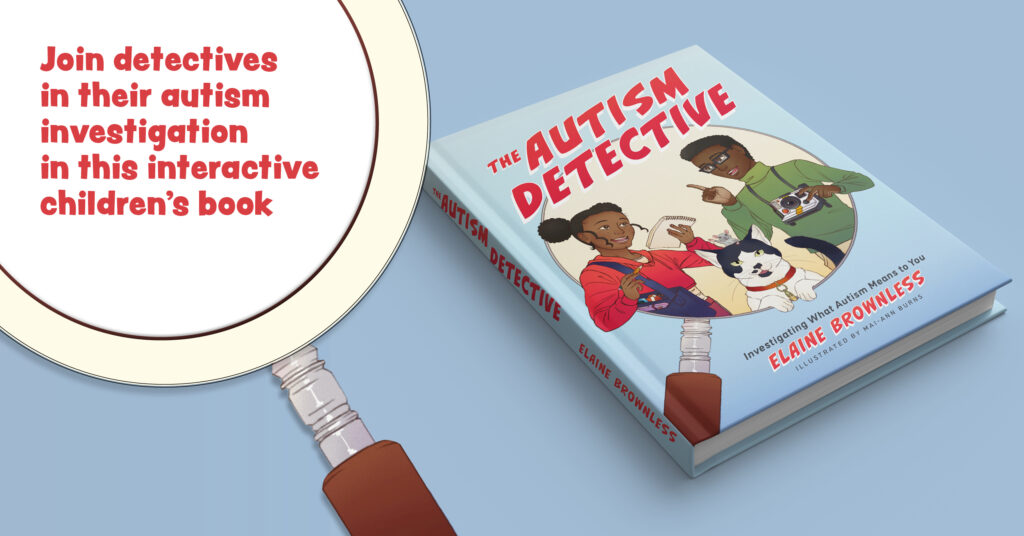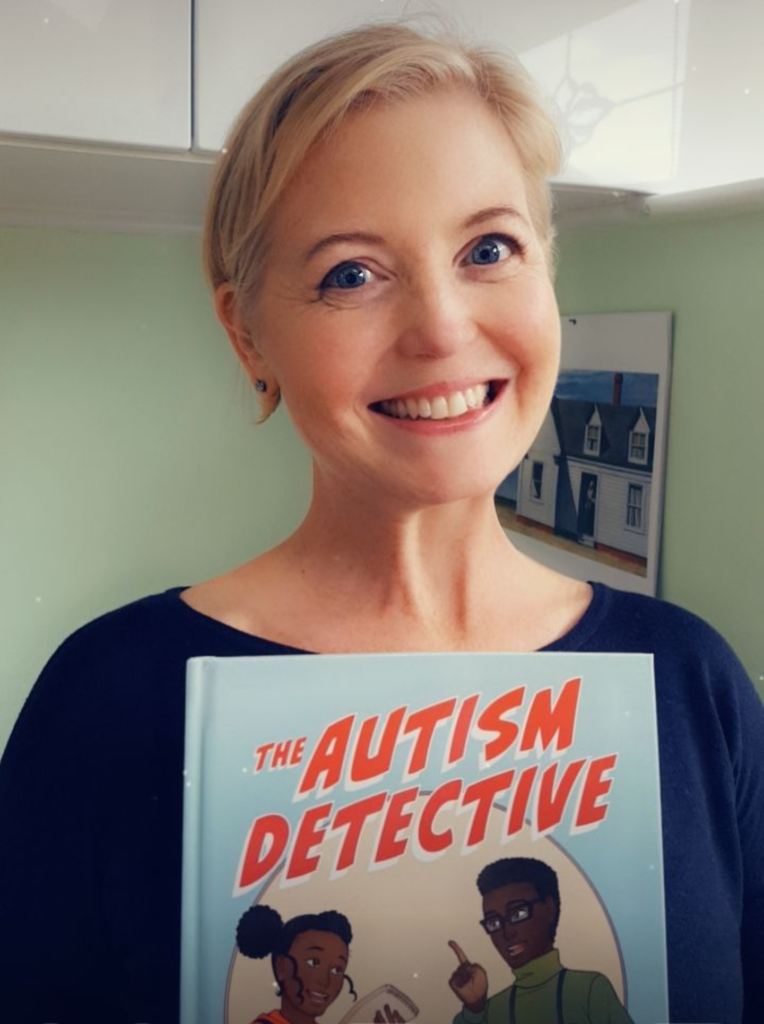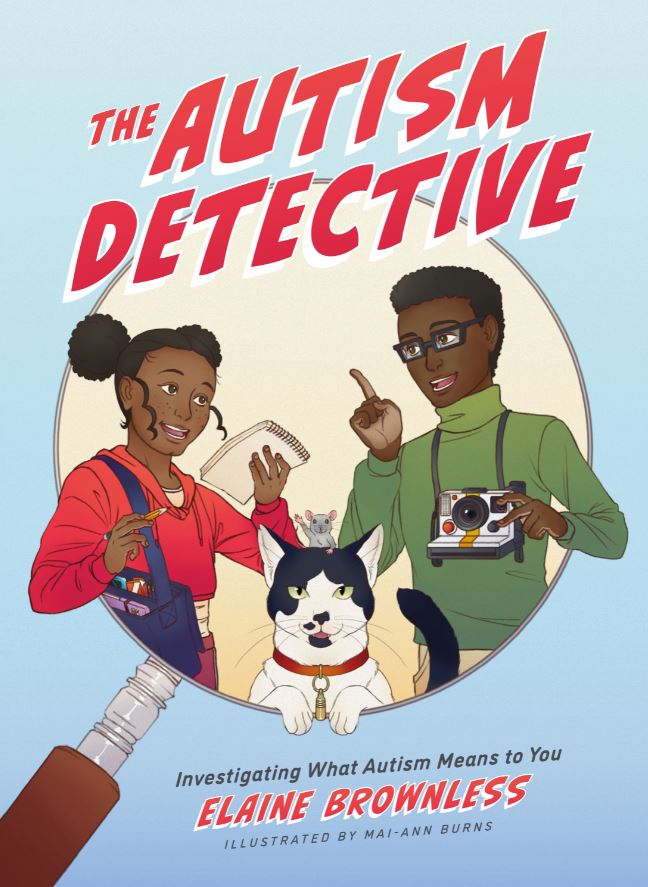The Autism Detective is an exciting new book for children, involving them in the mission to find out more about this thing called autism. We chatted to the book’s author, Elaine Brownless, to find out more about how the book came about.

Elaine, congratulations on the book’s publication! How does it feel to have it out in the world, and how long has it been in the works?
Thanks, it’s a relief and gratifying to finally see it in print. Back in 2017 I was on the verge of burn-out and realised I needed a break from my teaching job. I subsequently took a six-month break in 2018 and seized the time and space to write The Autism Detective, I never imagined that it would take so long to publish. It has been an interesting journey and I’ve learned a lot about publishing along the way. I do a lot of writing in my teaching role but writing a children’s book was a very different project for me. Usually, I have the freedom to update my work as frequently as I need to, in light of children’s evolving needs or trends in the autism field, but with a book, there is a finality to it. Autism is part of my everyday life, both professionally and personally, it’s a topic that I care about very much and I felt great pressure to portray it well.
I just love the interactive feel, where the reader gets to play detective alongside the characters of the book. How did you come up with that idea?
The concept behind the book is a game that I created approximately thirteen years ago for an autistic boy, Josh, who attended a mainstream primary school. He had been told about his ASD diagnosis by a clinician and it had really knocked his self-esteem; I wanted to do something to counter his negative first impression of autism. Good teaching involves presenting new concepts and information in a context; show children the big picture so that they can see where new learning fits and make it fun! Teaching children about autism should be no different, which is why I came up with the interactive detective idea.
Like the book, my game included everyday examples of diversity within a regular classroom and provided a context in which to understand autism. It helped Josh understand that knowing he was autistic would give him greater self-knowledge and access to the wider autistic community and support. We all have strengths and vulnerabilities, and irrespective of culture or neurological differences, there are connections we can all share. The game was a success so I went on to adapt it for use with subsequent children who also responded positively. Ultimately, the message I want to convey is a reassuring one, that it’s okay to be autistic, it’s okay to be who you are.

How did you come to writing a book about autism in the first place, what’s your background?
I’ve been a teacher for the last twenty-three years and most of that time I have worked specifically teaching, assessing, and advising on the educational needs of autistic children and young people, training teachers and parents too.
My professional autism journey began while I was still a classroom teacher; it’s where I discovered just how interesting and rewarding it is to teach children that think outside the box and have different ways of communicating. After then setting up an autism specialist provision I moved back to the North-East of England to work as an autism advisory teacher. In 2007 I had my first child, and it was the start of another autism adventure. I’ve worked with some amazing children, families and teachers and I’m continually learning and discovering things as a parent. I feel enormously grateful for the experience, and I love that the autism field has expanded so much. It’s been fantastic to see autistic women gain recognition over the last decade and now I would like to see non-speaking and BAME autistics given an equal voice and greater representation.
The illustrations from Mai-Ann Burns are fantastic, and really bring the characters of Kit and Scully to life. How did you find the process of working together, did you know each other before this book?
Mai-Ann’s illustrations are absolutely wonderful, aren’t they? Mai-Ann lives in the United States and consequently we have never met. Lots of initial sketches, written descriptions and drafts passed back and forth between us via email. I had quite a clear vision of what I wanted on each page and Mai-Ann has really honoured that vision beautifully adding her own amazing artistic talent. The cat in the book is based on my beloved cat, Minnie and the mouse that makes a pop-up appearance throughout was Mai-Ann’s creative addition. The ‘Brilliant Brain’ activities at the back were my daughter’s idea.
Did you write the book with a particular readership in mind, who’s it aimed at?
It was written for children to read with their parents or teachers before or after learning about their autism diagnosis, it’s a gentle way in. It offers a whistle-stop tour of the autism spectrum as I wanted to touch upon many points that could provide prompts for discussion. Writing generalised descriptions of autism is always problematic because each individual has their own unique experience so it’s incredibly important that we listen to our children and discover what is salient to them, what do they know and think already and where are the gaps in their knowledge? Although it was written for autistic children and families, I can see how it could work very well in schools for peer training, particularly as a group reader because there are many voices in the book.

What are your hopes for the book and its readers?
Throughout my career, parents have asked me for advice on sharing diagnosis with their children, I think it’s important that it is given a context and shared positively, I hope ‘The Autism Detective’ will help. School can be a particularly tough environment for autistic children and young people, for so many reasons. Children in my experience feel reassured to know there are other children like them with similar strengths and worries; they also often want to know what having diagnosis may mean for their future, both in the short term and long term.
Parents want to know this too. I hope the book will provide a platform for all children to talk about diversity. There is still a lot of misunderstanding about autism, stereotypes, stigmas, and a particularly confusing array of language labels that need confronting. Schools have a pivotal role in shaping a society that is kinder and in which there is understanding and equality.
The book has had some wonderful reviews from other authors like Kathy Hoopmann, Debby Elley and Kay Al-Ghani. How did it feel to get that feedback from your peers?
I’m really grateful to them. The language of autism is evolving so fast and as such, I had sleepless nights worrying about whether I’d got the tone right. It was incredibly encouraging and uplifting to receive their feedback, it means a lot.
Where can people find out more about you and your work? Do you have a website or are you on social media?
I’ve recently joined Twitter @BrownlessElaine and have already found that it’s a great place to connect with others. Many of my tweets are cat or garden related, two passions of mine.
What’s next? Do you have plans to write more books?
I have a few ideas up my sleeve but no plans to write another book just yet. I do have my sights on setting up a collaborative project to raise the profile of autism in secondary schools which I hope to begin next year.
You can find The Autism Detective at JKP.com or wherever you buy books. If you would like to read more articles like this and get the latest news and offers on our books about autism, why not join our mailing list? You may also be interested in our Facebook page or Twitter page.